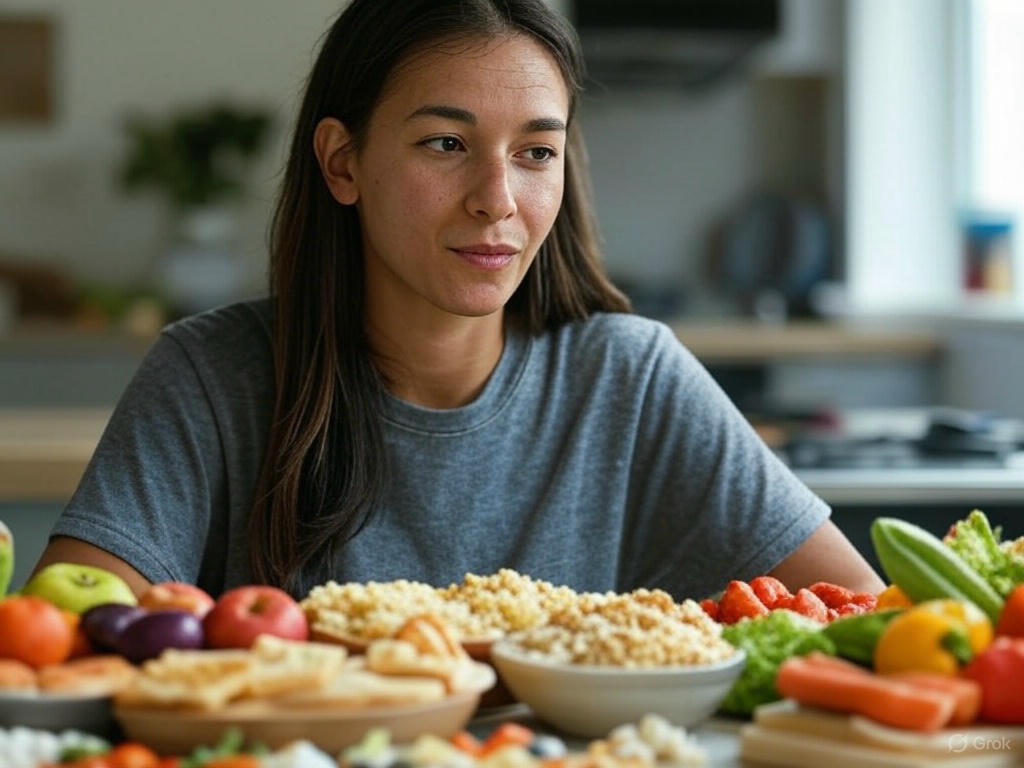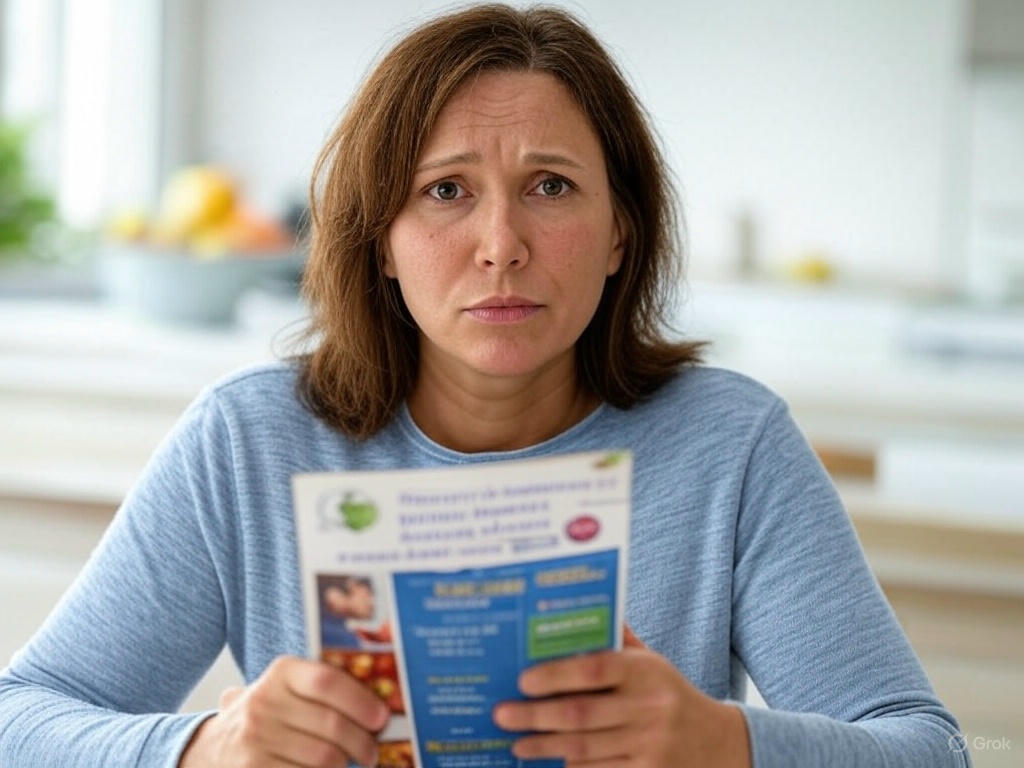Ever planned a “healthy diet” with Pinterest boards, green smoothies, and quinoa-packed lunches… only to crash by Day 3 with a pizza in one hand and guilt in the other? Yeah, me too. Dieting (or rather, eating right) sounds simple until real life kicks in with late nights, cravings, and that one friend who insists on dessert after every meal.
Truth is, most of us screw up our healthy eating plans not because we’re lazy or weak but because we’re… well, human. Let’s take a fun, brutally honest tour through the most common diet planning blunders and how to sidestep them like a pro.
Mistake #1: Going All-In With Restrictive Diets
You know the drill. Day 1: “No carbs, no sugar, no fun.” Day 4: Face-first in a brownie.
Why it happens:
- We crave instant results.
- Restriction makes everything we can’t have suddenly feel irresistible.
- We underestimate how much we love bread.
How to avoid it:
Instead of banning entire food groups like carbs or fats (which your body needs, BTW), try the 80/20 rule. Eat healthy, whole foods 80% of the time and allow yourself treats 20% of the time.
That way, you’re not constantly fighting cravings — you’re managing them like a smart cookie (pun intended).
Personal Story: I once tried a “fruit-only” cleanse for three days. By the end of Day 1, I was Googling “Can peanut butter be classified as fruit?” Spoiler alert: it can’t.
Mistake #2: Copy-Pasting Someone Else’s Meal Plan
Your favorite fitness influencer might swear by avocado toast and kale smoothies, but that doesn’t mean it’ll work for you.
Why it fails:
- Everyone’s metabolism, schedule, and taste buds are different.
- A diet that fits someone else’s lifestyle might totally clash with yours.
Fix it like this:
Customize your diet plan around your life.
- Are you a night owl? Plan a protein-rich dinner.
- Hate oatmeal? Don’t force it. Try Greek yogurt or eggs instead.
- Need snacks between meals? Go for nuts, fruits, or hummus with veggies.
Just because it looks pretty on Instagram doesn’t mean it’s sustainable IRL.
Mistake #3: Skipping Meals (Especially Breakfast)
“I’ll just skip breakfast to save calories.” Oh honey, don’t do it.
Why it’s a problem:
- Skipping meals slows your metabolism.
- You’re more likely to binge later.
- It messes with your mood and focus. (Hangry, anyone?)
How to fix it:
Even if you’re not a morning person, grab something simple like:
- A boiled egg with toast
- A banana with peanut butter
- Overnight oats (they practically make themselves)
Expert Tip: According to nutritionist Sarah Adler, eating within two hours of waking helps stabilize blood sugar and sets the tone for the rest of your day.
Counting calories is helpful, but it’s not the whole story.
Common traps:
- Choosing low-calorie junk (like 100-calorie cookies) over nutrient-dense food
- Drinking zero-calorie sodas instead of water or fresh juices
- Ignoring portion sizes just because “it’s healthy”
Smarter approach:
Focus on nutrient density, not just numbers. Ask yourself:
- Is this meal giving me fiber, protein, healthy fats, and vitamins?
- Will this keep me full and energized?
A 300-calorie salad with beans, veggies, and olive oil trumps a 200-calorie snack bar full of chemicals every time.
Metaphor moment: Your body isn’t a calculator — it’s more like a car. You don’t just want to know how much fuel you have, but what kind of fuel you’re putting in.
Mistake #5: Ignoring Emotional Eating
Raise your hand if you’ve ever eaten ice cream because you were sad, bored, or Netflix-bingeing. Both my hands are up.
Why it’s tricky:
- Emotions hijack logic.
- We associate food with comfort.
What helps:
- Keep a food and mood journal.
- Identify your triggers: stress, loneliness, PMS, etc.
- Replace the habit: take a walk, call a friend, listen to music.
By the way, eating for joy occasionally is okay. Emotional eating becomes an issue only when it’s your go-to coping mechanism.

Mistake #6: Forgetting to Hydrate
Sometimes you’re not hungry — you’re just thirsty.
Common signs of dehydration:
- Headaches
- Fatigue
- Random cravings (especially for sugar)
Hydration hacks:
- Start your day with a glass of warm water.
- Carry a funky water bottle (yes, aesthetics help).
- Infuse your water with lemon, mint, or cucumber for flavor.
Real Talk: I used to survive on 2 cups of coffee and zero water. No wonder I felt tired all the time. Now? I aim for 2-3 liters daily, and my skin finally stopped acting like a cactus.
Mistake #7: Not Planning for Snacks
Healthy eating isn’t just about meals — it’s also about surviving that 4 PM snack attack.
Why this matters:
- Unplanned hunger leads to vending machines and regret.
- Balanced snacks prevent overeating later.
Smart snack ideas:
- Almonds + dark chocolate
- Apple slices + almond butter
- Greek yogurt + berries
Prep these in advance and keep ’em handy. Your future self will thank you.
Mistake #8: Relying Too Much on “Healthy” Packaged Foods
Just because it says “organic,” “gluten-free,” or “low-fat” doesn’t mean it’s a health food.
What to look out for:
- Added sugars (even in protein bars)
- Sodium bombs (hello, canned soups)
- Fake portion sizes (check those labels!)
The fix:
Read the ingredient list. If it sounds like a chemistry experiment, maybe skip it.
Quick rule: If your grandma wouldn’t recognize it as food, maybe it’s not.
Mistake #9: Not Getting Expert Advice
Your body isn’t a science experiment — guesswork can backfire.
When to ask for help:
- You’ve got a medical condition
- You’re not seeing results despite trying everything
- You feel confused by conflicting advice online
Whom to consult:
- Registered dietitians
- Certified nutrition coaches
- Doctors with functional medicine backgrounds
FYI: A Google search doesn’t count as medical advice. Get personalized support if you’re serious about long-term health.
Mistake #10: Expecting Perfection
Look, nobody eats kale every day. (And if they say they do, they’re probably lying.)
Why this mindset fails:
- One slip-up feels like failure.
- It creates guilt instead of progress.
Better mindset:
Progress > Perfection.
A healthy diet is like a relationship — it requires flexibility, forgiveness, and the occasional slice of cake.
Quote to remember: “One bad meal won’t make you unhealthy, just like one salad won’t make you fit.”
FAQs: Quick Answers for Common Questions
Q1: What’s the biggest mistake in healthy diet planning?
Over-restricting or copying someone else’s plan without personalizing it.
Q2: Can I have cheat days?
Yes — balance is key! Just don’t let a cheat day become a cheat week.
Q3: Do I need to count calories?
Not necessarily. Focus on whole foods and portion sizes.
Q4: Are smoothies healthy?
They can be — just skip the sugar bombs. Stick to fruits, veggies, and protein.
Q5: How much water should I drink?
Aim for at least 2–3 liters a day. More if you’re active.
Final Thoughts: Be Real, Not Perfect
Healthy eating isn’t about salads and suffering. It’s about listening to your body, enjoying real food, and not beating yourself up when you accidentally demolish a tub of popcorn during movie night.
So ditch the guilt, ditch the fads, and start building a diet that actually fits your life.
Your Turn!
Ever fallen into one of these diet traps? Got your own food planning hack to share? Drop it in the comments — let’s learn (and laugh) together!
Hungry for more real-talk nutrition tips? Hit that subscribe button, and let’s keep this wellness party going.
